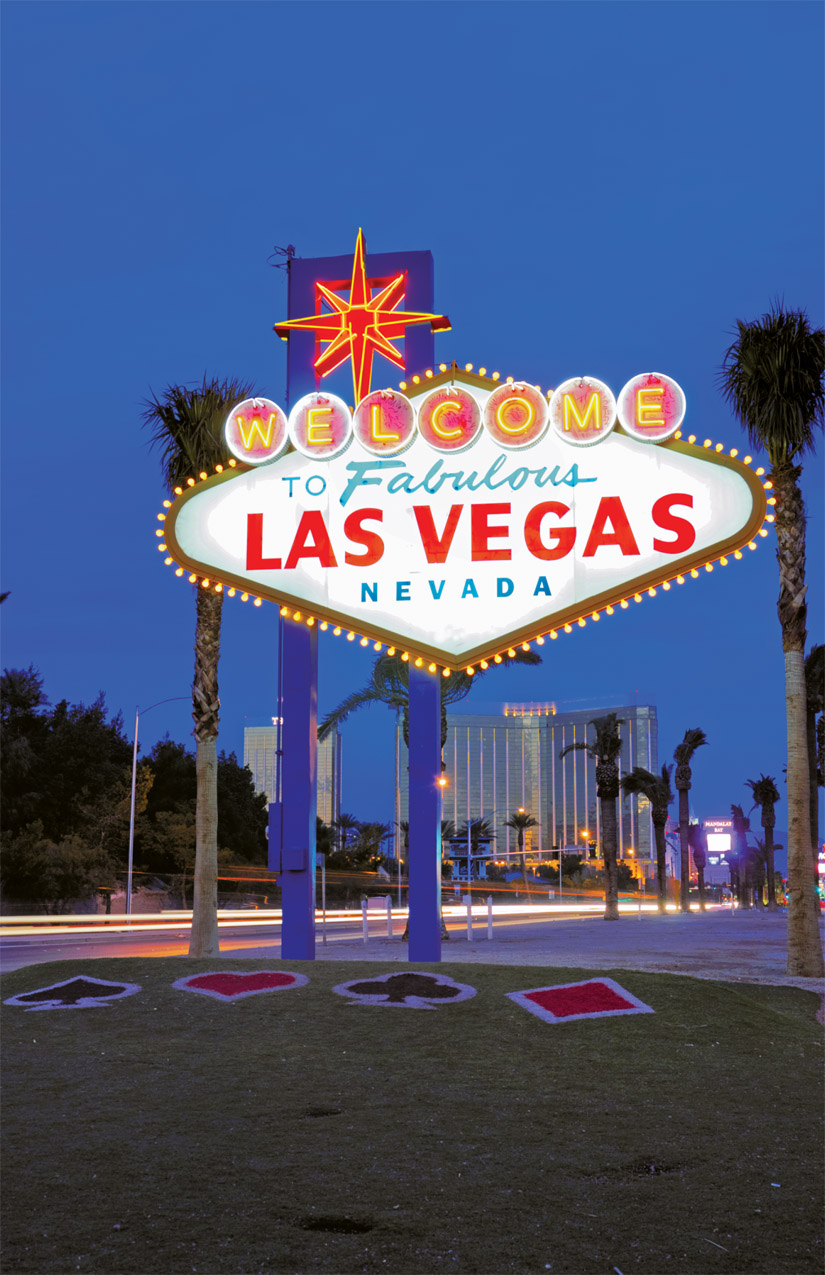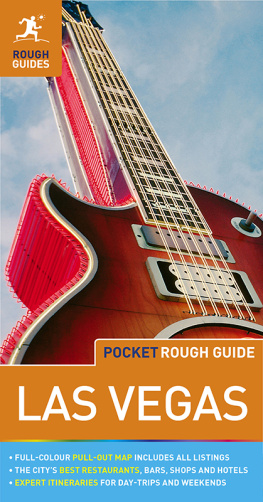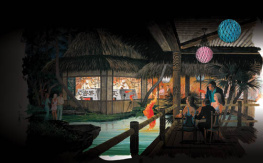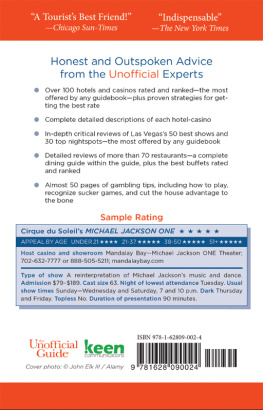DISCOVERING
VINTAGE
Las Vegas
All the information in this guidebook is subject to change. We recommend that you call ahead to obtain current information before traveling.

Globe Pequot is an imprint of Rowman & Littlefield
Distributed by NATIONAL BOOK NETWORK
Copyright 2014 by Rowman & Littlefield
All rights reserved. No part of this book may be reproduced in any form or by any electronic or mechanical means, including information storage and retrieval systems, without written permission from the publisher, except by a reviewer who may quote passages in a review.
British Library Cataloguing-in-Publication Information available
Library of Congress Cataloging-in-Publication Data
Papa, Paul W.
Discovering vintage Las Vegas : a guide to the citys timeless shops, restaurants, casinos & more / Paul W. Papa. First edition.
pages cm
Includes index.
ISBN 978-1-4930-0645-8 (paperback)
1. Las Vegas (Nev.)Guidebooks. 2. Stores, RetailNevadaLas VegasGuidebooks. 3. RestaurantsNevadaLas VegasGuidebooks. 4. CasinosNevadaLas VegasGuidebooks. 5. Historic buildingsNevadaLas VegasGuidebooks. 6. Las Vegas (Nev.)Buildings, structures, etc.Guidebooks. I. Title.
F849.L35P366 2014
917.931350434dc23
2014037231
 The paper used in this publication meets the minimum requirements of American National Standard for Information SciencesPermanence of Paper for Printed Library Materials, ANSI/NISO Z39.48-1992.
The paper used in this publication meets the minimum requirements of American National Standard for Information SciencesPermanence of Paper for Printed Library Materials, ANSI/NISO Z39.48-1992.
For Norma, who understood the importance of history and held it dear.
Acknowledgments
I would first and foremost like to thank all those people who sat with me and told me their wonderfully intriguing stories. This book is the direct result of people who love what they do and do what they love and I am honored to have been able to capture their stories and pass them on to future generations. I would also like to thank all those people who suggested places to write about. I couldnt have done this book without you all. A special thanks goes out to Karen Green, curator of the National Atomic Testing Museum, for giving me my own personal tour, Laura Hutton at the Boulder Dam Hotel, Mark P. Hall-Patton at the Clark County Museum, and Geoff Schumacher at the Mob Museum. Special thanks also go out to Max Jacobson-Fried who assisted in my research by providing me with some very tasty treats, Evan Glusman who was responsible for one of the best Italian meals my wife and I ever had, Lindsay Wold who gave me some great chocolate, Roger Ghormley who treated my family to Southern-style catfish, Neriza Johnson who showed me why her family is famous for tamales, and Tim Jensen for a couple of scrumptious steaks. Thanks also to my wife, Melissa Papa, who read every story before it was finalized, kept my grammar on track, and made some very valuable suggestions. Finally, Id like to thank my wonderful editor, Tracee Williams, for her insight, guidance, and obvious desire to make this the best book it could possibly bethanks!
About the Author
Paul W. Papa is a full-time writer who has lived in Las Vegas for more than twenty years (making him vintage as well). He developed a fascination with the town, and all its wonders, while working for close to fifteen years at several Las Vegas casinos. In his role as a security officer, Paul was the person who actually shut and locked the doors of the Sands Hotel and Casino for the final time. He eventually became a hotel investigator for a major Strip casino, during which time he developed a love for writing true stories about uncommon events. He now owns a business that concentrates on nonfiction, technical, and commercial writing. Paul is the author of several books on Las Vegas including It Happened in Las Vegas: Remarkable Events That Shaped History and Haunted Las Vegas: Famous Phantoms, Creepy Casinos, and Gambling Ghosts . When not at his keyboard, Paul can be found talking to tourists on Freemont Street, investigating some old building, or sitting in a local diner hunting down his next story.

Introduction
I live in a beautifully strange town, one that both honors its past and destroys it. As old casinos are imploded to make way for the new, in Las Vegas the term vintage can take on a whole new meaning. Add to this the fact that Las Vegas is barely one hundred years old, and youll quickly discover that finding anything vintage can present quite a challenge. But the valley is full of historythat is, if you know where to look. As Las Vegas progressed from a sleepy little train stop on the way to California to becoming the entertainment capital of the world, many businessesand casinossimply ceased to exist. Some, however, withstood the test of time and are still serving the community. And believe it or not, in a city that turns an implosion into a media event, there are some buildings that have lasted since the time when Vegas was still largely made of tents.
Writing a book that deals with old but still existing businesses can pose its own obstacles. Sometimes, despite the best of efforts, the book of history can close on some of those businesses before you get to tell their story. Such was the case with the El Sombrero Caf, which, up until a few months ago, had been in operation since 1950, making it the oldest restaurant in Las Vegas. Now that restaurant is no moreand so too is the story I wrote about it. My apologies go to Gary Whitey Porteus, his brother Russ The Patriarch Porteus, and their friend John Ennesser, loyal patrons of El Sombrero Caf who were excited about being in the book. Hopefully theyll find another place to make the loser wear that sombrero.
The problem with writing a book about vintage places is deciding how to define the term vintage. Certainly vintage means old, but a book about old places in Las Vegas just didnt seem fitting. So, as writers are prone to do, I turned to my well-worn dictionary and found a definition that seemed to suit my needs. Vintage: Of old, recognized, and enduring interest, importance, or quality. It was this definition that I used as the basis for selecting places to include in the book.
Las Vegas is known so much for the bright, shiny hotels and casinos that adorn Las Vegas Boulevard, more commonly known as the famous Strip, it can be easy to forget that surrounding that strip is an actual townone where regular people live day-to-day lives, establish communities, and open businesses unique to this fascinating town. It is these places that I chose to include. Places with recognized and enduring interest, those with importance and quality, those that require a bit more investment to find than a walk down the Strip. However, trust me, that investment will not only be worth it, itll be well rewarded.
Still, the Strip is one of the main reasons people come to Las Vegas and ignoring it didnt seem quite right. So I didnt. Several of the places I included in the book are located right on Las Vegas Boulevard, and many of these places are both iconic and so associated with Las Vegas that the book wouldnt be complete without them. Besides the fifty places I chose to write full stories about, there are many other vintage spots that are mentioned throughout the book. So if you flip through the table of contents and dont automatically see a place you thought should have been included, fret not, your favorite might just be one of those vintage spots. If after reviewing the vintage spots, you still dont find it, my apologies.










 The paper used in this publication meets the minimum requirements of American National Standard for Information SciencesPermanence of Paper for Printed Library Materials, ANSI/NISO Z39.48-1992.
The paper used in this publication meets the minimum requirements of American National Standard for Information SciencesPermanence of Paper for Printed Library Materials, ANSI/NISO Z39.48-1992.